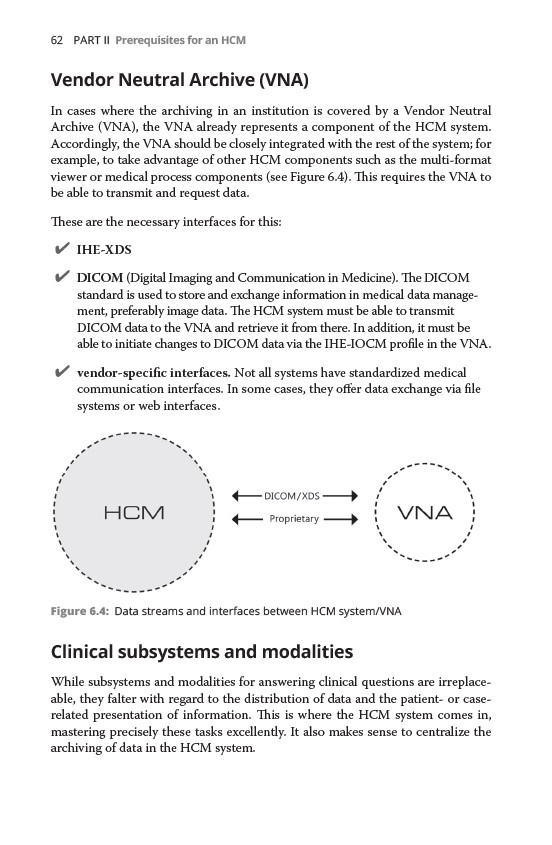
62 PART II Prerequisites for an HCM
Vendor Neutral Archive (VNA)
In cases where the archiving in an institution is covered by a Vendor Neutral
Archive (VNA), the VNA already represents a component of the HCM system.
Accordingly, the VNA should be closely integrated with the rest of the system; for
example, to take advantage of other HCM components such as the multi-format
viewer or medical process components (see Figure 6.4). This requires the VNA to
be able to transmit
and request data.
These are the necessary interfaces for this:
✔✔ IHE-XDS
✔✔DICOM (Digital Imaging and Communication in Medicine). The DICOM
standard is used to store and exchange information in medical data management,
preferably image data. The HCM system must be able to transmit
DICOM
data to the VNA and retrieve it from there. In addition, it must be
able to initiate changes to DICOM data via the IHE-IOCM profile in the VNA.
✔✔ vendor-specific interfaces. Not all systems have standardized medical
communication interfaces. In some cases, they offer data exchange via file
systems or web interfaces.
Figure 6.4: Data streams and interfaces between HCM system/VNA
Clinical subsystems and modalities
While subsystems and modalities for answering clinical questions are irreplaceable,
they falter with regard to the distribution of data and the patient- or case-
related presentation of information. This is where the HCM system comes in,
mastering precisely these tasks excellently. It also makes sense to centralize the
archiving of data in the HCM system.